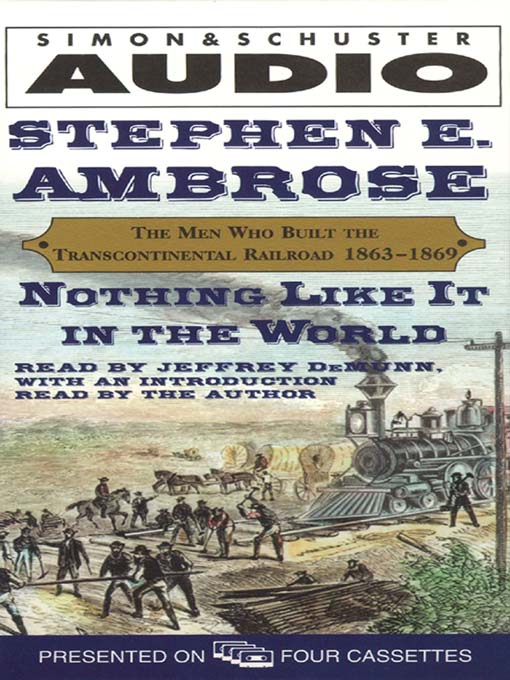-
Description
-
Creators
-
Details
-
Reviews
Nothing Like It in the World gives the account of an unprecedented feat of engineering, vision, and courage. It is the story of the men who built the transcontinental railroad—the investors who risked their businesses and money; the enlightened politicians who understood its importance; the engineers and surveyors who risked, and sometimes lost, their lives; and the Irish and Chinese immigrants, the defeated Confederate soldiers, and the other laborers who did the backbreaking and dangerous work on the tracks.
The U.S. government pitted two companies—the Union Pacific and the Central Pacific Railroads—against each other in a race for funding, encouraging speed over caution. Locomotives, rails, and spikes were shipped from the East through Panama or around South America to the West or lugged across the country to the Plains. In Ambrose's hands, this enterprise, with its huge expenditure of brainpower, muscle, and sweat, comes vibrantly to life.

- Stephen E. Ambrose - Author
- Jeffrey DeMunn - Narrator
OverDrive Listen audiobook
- ISBN: 9780743518505
- File size: 204551 KB
- Release date: August 1, 2000
- Duration: 07:06:08
MP3 audiobook
- ISBN: 9780743518505
- File size: 204577 KB
- Release date: August 1, 2000
- Duration: 07:06:08
- Number of parts: 6

Loading
Formats
OverDrive Listen audiobook
MP3 audiobook
subjects
Languages
English
